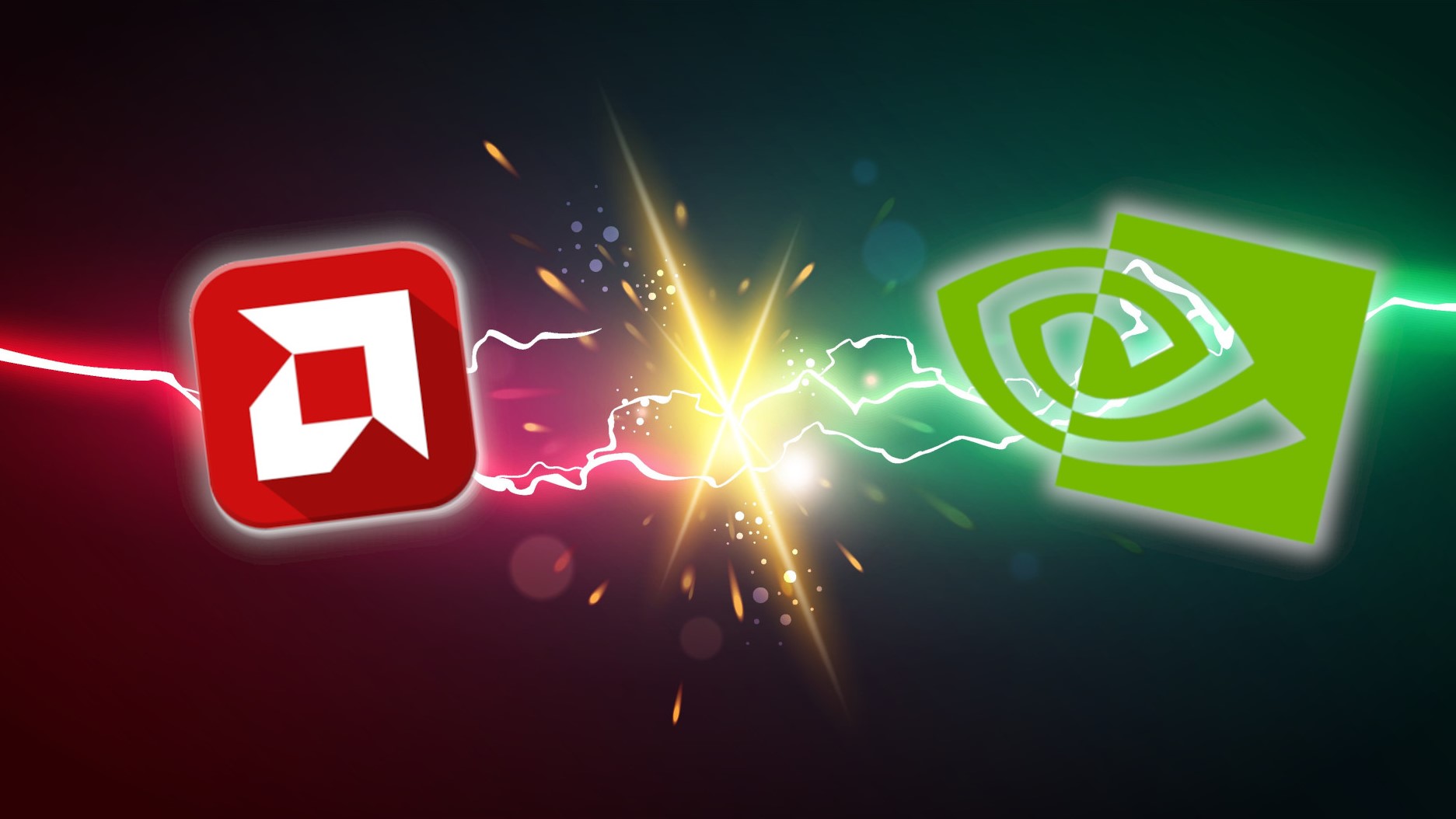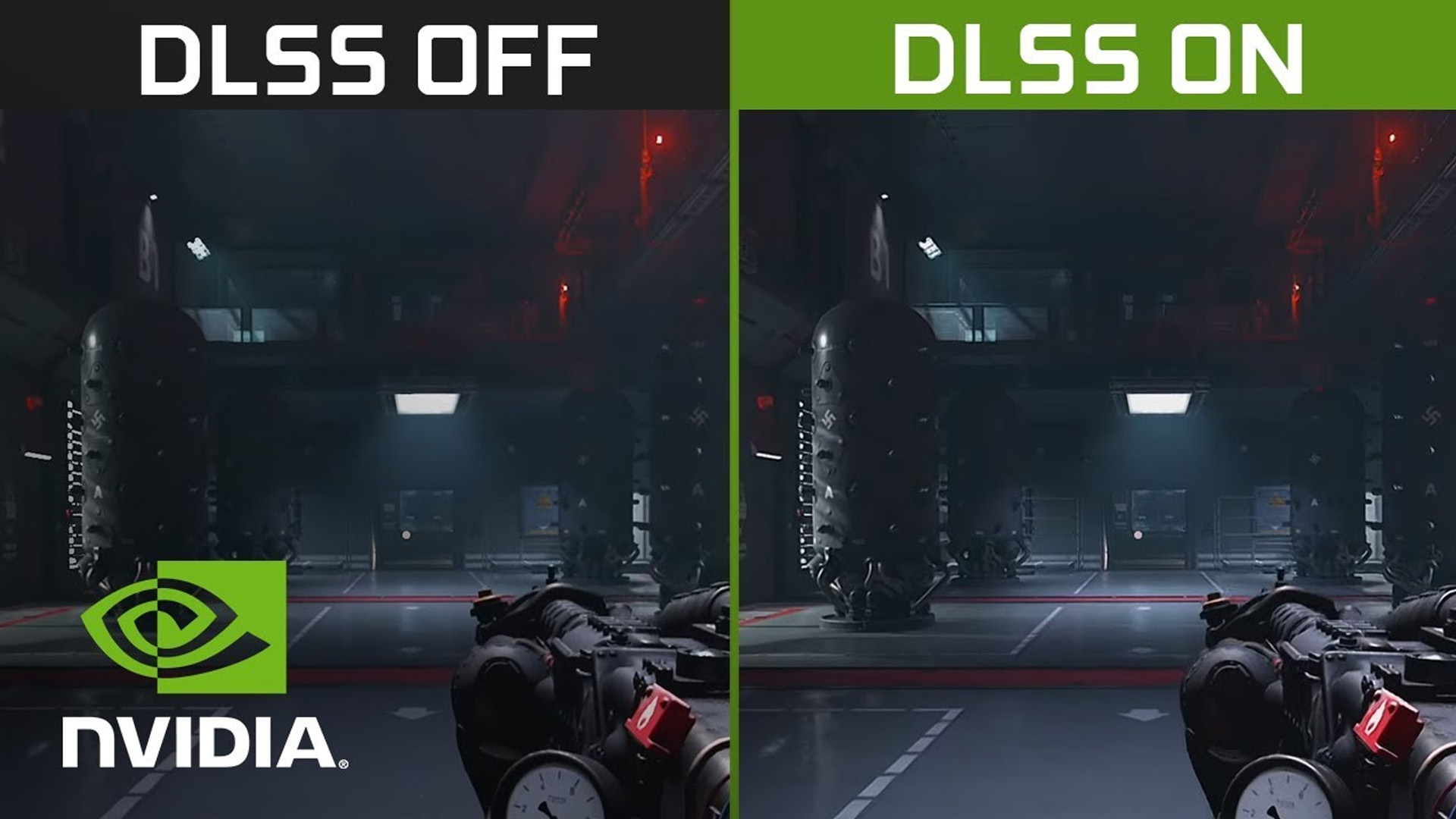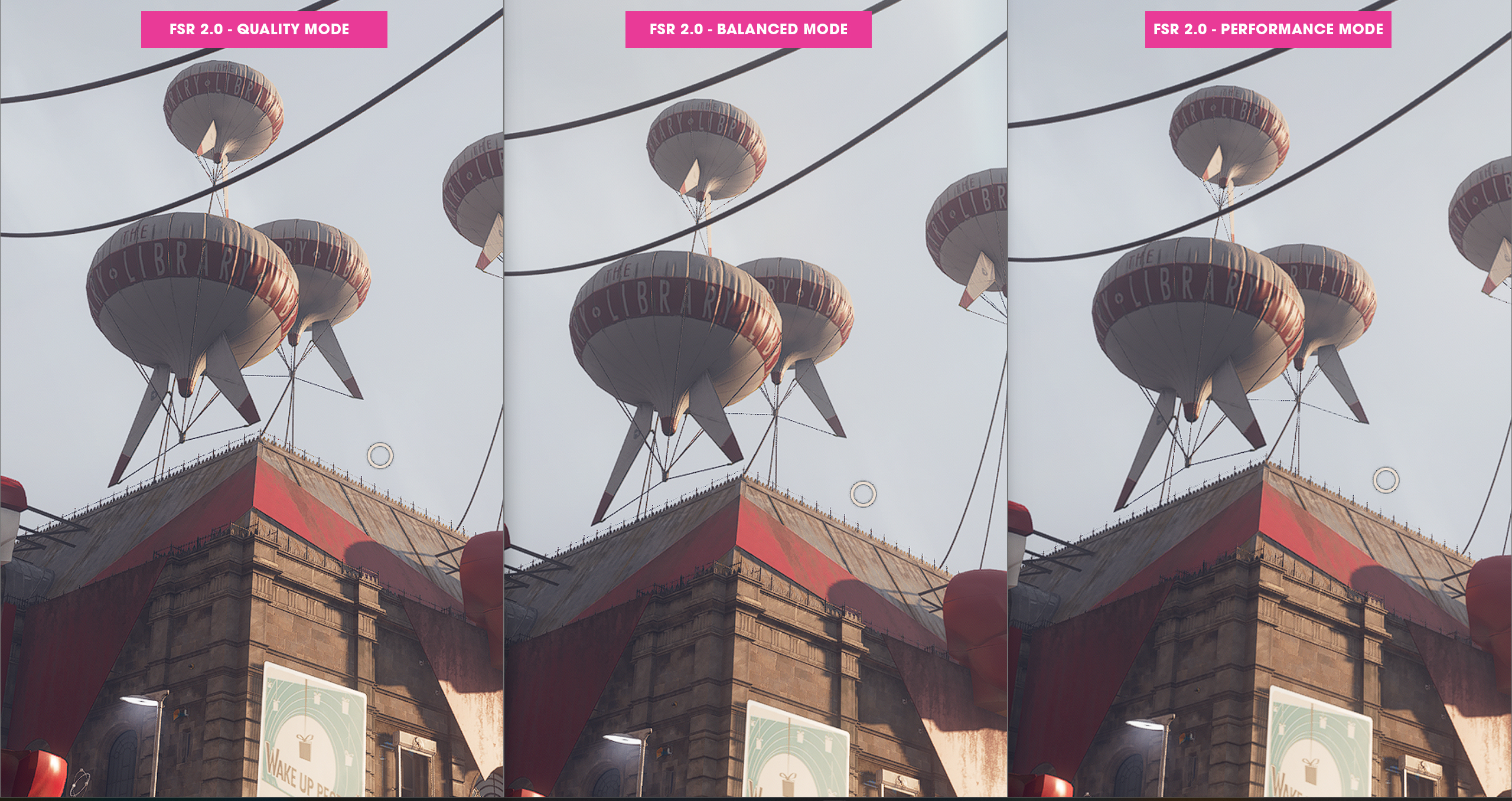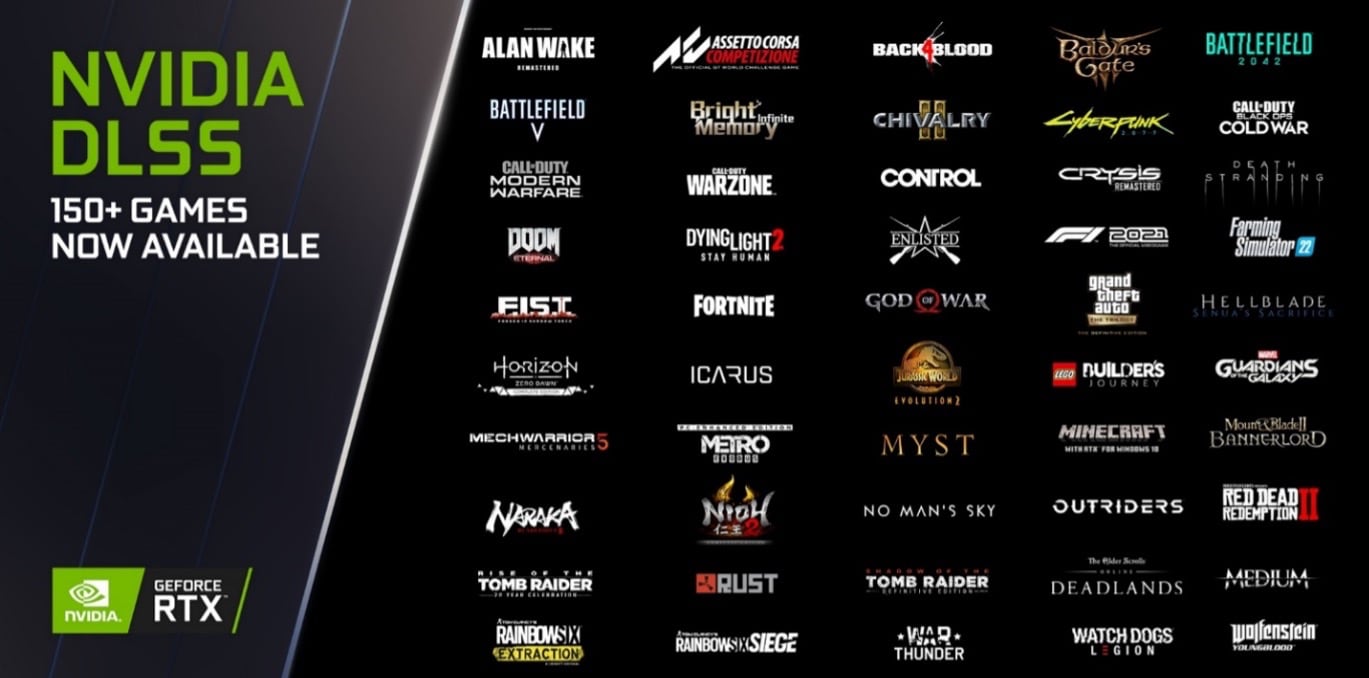Nvidia DLSS vs AMD FSR: which graphics upscaling technology is better?
AMD and Nvidia go head to head, but only one team has AI on its side

Upscaling technology has become the new battleground for GPU makers, with both AMD and Nvidia (oh, and Intel) offering their own options for improving your framerates when playing PC games.
For the uninitiated, upscaling technology works by making your graphics card render a game at a lower resolution (1080p, in most cases) before scaling it up - hence the name - to a higher target resolution with no loss of framerate. This lets you get a smoother gameplay experience at 1440p, 4K, and even 8K.
Nvidia's Deep Learning Super Sampling (DLSS), as the name implies, uses deep-learning AI functionality to provide a highly effective upscaling solution. Over on the red side, AMD's FidelityFX Super Resolution (FSR) notably doesn't use AI, but produces ultimately the same service.
But which is better? That's what you're here to find out. I should probably mention Intel's upscaling software briefly here too, called XeSS - but that tech is still in its first iteration and only available on a small number of Intel Arc GPUs, so it's not a key competitor in this space just yet. So with the rules of engagement laid out, it's time for DLSS versus FSR!
DLSS vs FSR: Performance
Let's start by talking about the performance boosts offered by Nvidia and AMD's upscaling modes, since that's the main appeal of the technology: better performance in your favorite PC games.
Comparing the first two iterations of DLSS and FSR paints a fairly balanced picture: they offer a comparable level of performance boost in games at 1440p and 4K against running the same resolutions without upscaling turned on. Notably, Nvidia tended to lead slightly in ray-traced workloads, so games like Cyberpunk 2077 will run a bit smoother at maximum graphical settings using DLSS.
However, Nvidia recently released DLSS 3 for its RTX 4000 GPUs, led by the flagship RTX 4090. The third generation of DLSS is currently only available on Nvidia's latest cards, but it offers a unique new feature: full frame generation.

This allows your GPU to produce entire frames of gameplay using machine learning and insert them between existing rendered frames, further increasing the framerate. This has an even more marked impact on performance, with some games seeing more than double the framerate at 4K compared to not using DLSS at all.
AMD's FSR is currently still only in its second incarnation, and the fact is that FSR 2.0 just can't keep up with DLSS 3. However, Team Red is working on FSR 3.0, and has confirmed that it will feature frame-gen capabilities - but since FSR uses spatial upscaling algorithms instead of AI, there are some concerns.
Frame interpolation - the process of producing and inserting these additional frames of gameplay - without AI-powered hardware acceleration poses a risk of added latency. As anyone who plays twitchy shooters like Valorant will tell you, latency is a killer in PC gaming; if AMD can't solve that issue before FSR 3.0 gets a wider release, it could be a serious problem.
- Winner: DLSS
DLSS vs FSR: Compatibility
Without wanting to beat about the bush, Nvidia loses this round instantly. Not only does DLSS require AI cores (Nvidia calls them Tensor cores) to operate, which means it's only functional on RTX 2000 and newer GPUs, but it's also locked to Nvidia GeForce GPUs specifically, whereas AMD's upscaling option instead uses open-source tech that can run on any graphics card.
Every version of FSR - including the upcoming FSR 3.0 - should be able to run on any graphics card, including Nvidia's. There are limits to this, of course. Don't expect to be using FSR on anything older than an RX 570 or GTX 1070, but at least you can run it on hardware more than a couple of years old.

DLSS also suffers from generational limits; as I mentioned above, DLSS 3 and its fancy frame-generation tech is currently only available on RTX 4000 cards at present. There has been discussion of DLSS 3 functionality being back-ported to RTX 3000 GPUs, but only the standard upscaling capabilities, not frame-gen. As such, it's an easy win for FSR here.
- Winner: FSR
DLSS vs FSR: Game Support
With both DLSS and FSR, actual support for using upscaling in games needs to be implemented on the developer's end. In other words, if the people making a game don't take the time to support upscaling, it just won't be an option.
Fortunately, both Nvidia and AMD have been throwing money at major game studios to ensure that more new games do come with upscaling support. This sometimes leads to contentious situations, like the reveal that Bethesda's upcoming epic RPG Starfield would not support DLSS 3 due to a partnership with AMD.
For the most part, though, both companies are making decent progress with getting upscaling implemented - at least in triple-A games, where the need for DLSS or FSR is more prominent due to typically more demanding hardware requirements compared to indie titles.

DLSS is available for just shy of 300 games at the time of writing, while AMD lags behind around the 150 mark - though Nvidia's tech has been on the block for more than two years longer than AMD's competitor, so it's hardly surprising Team Green has the lead. At this point, both companies are adding new compatible games at a similar rate.
It's worth noting, however, that since FSR is open-source, it's a little easier for developers to implement. On top of this, DLSS support is broken down generationally; DLSS 3 with frame generation is only supported by around 50 games at the time of writing.
If you're willing to mess about with third-party software, a project called Magpie (available on GitHub) lets you run an injector that makes FSR compatible with virtually any game, but even that has its drawbacks. Overall, it's hard to pick a clear winner here; Nvidia has the flat numbers advantage, but until we reach true widespread compatibility with upscaling tech, it's still all to play for.
- Winner: Tie
Which one is the best overall?
As you might have worked out by now, I'm not going to declare an outright victor here. DLSS is the more widespread option, with better performance and more games supported, but it necessitates an Nvidia GPU and isn't an option for anyone gaming on older hardware.
Conversely, AMD was late to the upscaling party with FSR, but has been putting in the work to improve its competing software. I'm hopeful that FSR 3.0 will ensure that Team Red remains competitive against Nvidia in this particular battleground, but until it arrives that's anyone's guess.
As for which one you should use - well, it depends on what GPU you've got and what games you want to play! If you're rocking a brand new RTX 4060, you should obviously be taking advantage of DLSS 3 in all the games supporting it, but if you're using an older GPU or any of AMD's best graphics cards, then FSR is probably the way to go.
- Winner: Tie
Get daily insight, inspiration and deals in your inbox
Sign up for breaking news, reviews, opinion, top tech deals, and more.

Christian is TechRadar’s UK-based Computing Editor. He came to us from Maximum PC magazine, where he fell in love with computer hardware and building PCs. He was a regular fixture amongst our freelance review team before making the jump to TechRadar, and can usually be found drooling over the latest high-end graphics card or gaming laptop before looking at his bank account balance and crying.
Christian is a keen campaigner for LGBTQ+ rights and the owner of a charming rescue dog named Lucy, having adopted her after he beat cancer in 2021. She keeps him fit and healthy through a combination of face-licking and long walks, and only occasionally barks at him to demand treats when he’s trying to work from home.